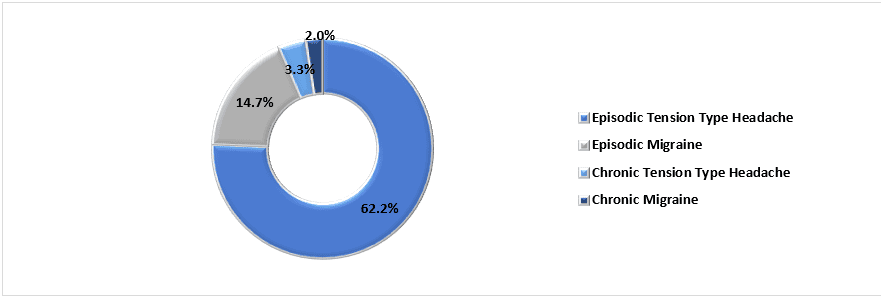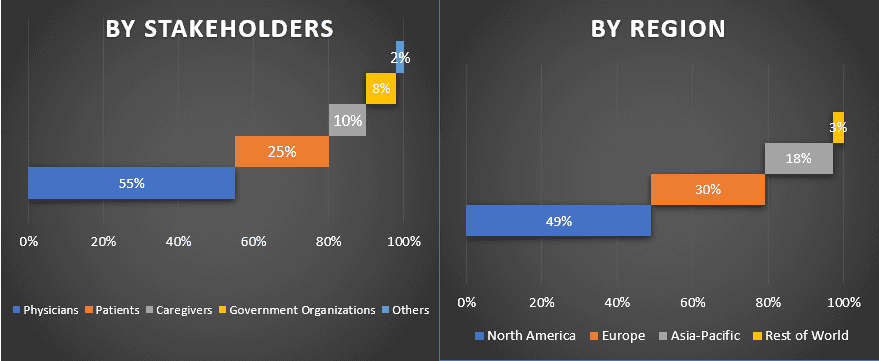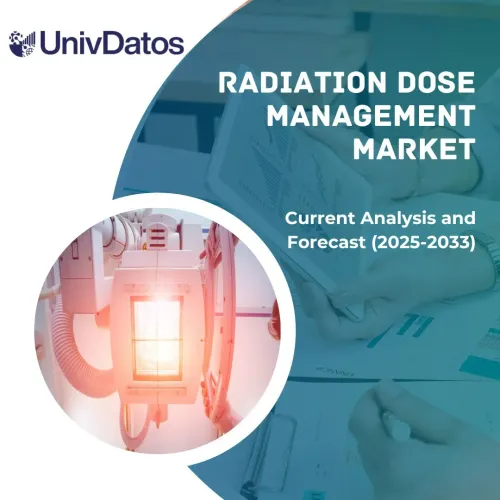- Home
- About Us
- Industry
- Services
- Reading
- Contact Us
Neuromodulation Devices Market: Current Analysis and Forecast (2021-2027)
Emphasis on Technology (Spinal Cord Stimulators, Deep Brain Stimulators, Sacral Nerve Stimulators, Transcranial magnetic Stimulators, Others); Application (Pain Management, Hearing Loss, Depression, Parkinson’s Disease, Epilepsy, Others); and Region & Country.
Neuromodulation Devices Market is expected to exceed the market valuation of more than US$ 11.7 billion in 2027 and is expected to grow at a significant CAGR of 8.4% during the forecast period (2021-2027). The neuromodulation devices market showed a rising CAGR even during the pandemic years. This is because of the technologies like vagus nerve stimulators which are effective in treating respiratory diseases. In the United States, 20.4% of the adults were suffering from chronic pain in 2019 and it affected the daily lives of 7.4% of the individuals. Neurostimulation is a promising therapy for long-term pain/neurological disorder management. Patients can be dosed with various modulations, amplitudes, pulses, and frequencies of electrical current depending on the extent of their diseases. Furthermore, neuromodulation devices rarely cause any side effects, unlike the long-term dosage of pharmaceutical drugs are bound to cause. Neuromodulations are typically harmless to the nervous system. The popularity of neuromodulation devices is boosting in the coming years and the market is estimated to grow at a considerable CAGR in the forecast period.
The North American region has the highest revenue in the neuromodulation devices market. According to a 2019 report, approximately 2 million Canadians suffer from high-impact chronic pain. Additionally, 1 million Americans suffer from Parkinson’s disease. These diseases have a very high potential to be cured by neuromodulation therapies. The North American neuromodulation society is a non-profit scientific organization that promotes neuromodulation treatments for various diseases. They want to increase people’s quality of life with the use of neuromodulation devices. The United States is the largest market for neuromodulation devices. With the advancements in technology and the United States Department of defense also investigating the technology, the interest of consumers is heightened towards neuromodulation devices. American companies like Boston Scientific are making their treatments unique and personal for the patients. Boston Scientific customizes the neuromodulation devices as per the needs of the patients and as advised by the physicians. The American tinnitus association reports that over 50 million Americans experience some form of tinnitus (a hearing loss disorder). Additionally, 11 million adults in the United States had a depression episode in 2019. The prevalence and increase of all these illnesses are boosting the neuromodulation devices market growth in the United States.
Population Suffering From Headache Disorders, Globally, (%), 2018
Abbott Laboratories, Boston Scientific Corporation, Medtronic PLC, Nevro Corporation, St. Jude Medical, Inc., Neurosigma Inc., Neuronetics Inc., LivaNova PLC, Nuvectra, Cyberonics are some of the prominent players operating in the neuromodulation devices market. Several M&As along with partnerships have been undertaken by these players to facilitate customers with hi-tech and innovative products/technologies.
Insights Presented in the Report
“Amongst Technology, Spinal Cord Stimulators segment holds the major share”
Based on technology the neuromodulation devices market is divided into spinal cord stimulators, deep brain stimulators, sacral nerve stimulators, vagus nerve stimulators, transcranial magnetic stimulators, and others. The spinal cord stimulators (SCS) segment made the highest revenue in 2020. A long-term SCS study done on 102 patients showed a 68% reduction in intractable pain conditions. Medtronic, St. Jude Medical and Boston scientific are the key players in deep brain stimulation (DBS) Devices. FDA has approved DBS for essential tremors, refractory PD, OCD, and Dystonia. Additionally, other disorders under investigation are depression, chronic pain, Tourette syndrome, alcohol and drug addiction, Alzheimer disease, and cluster headache. Vagus nerve stimulation is used to treat epilepsy and treatment-resistant depression and is under study for several other indications.
“Amongst Application, Pain Management segment holds the major share”
Based on application, the neuromodulation devices market is segmented into pain management, hearing loss, depression, Parkinson’s disease, epilepsy, and others. The pain Management segment had the highest revenue in 2020 and showed the highest CAGR in the forecasted period. While most neuromodulation devices require prescriptions, FDA has approved the over-the-counter sale of one device. The transcutaneous vagus nerve stimulator is a handheld non-invasive electrical neurostimulation device that targets the vagus nerve on the neck. It has been used by patients with cluster headache and migraine pain. Neuromodulation therapy is shown to reduce depression, Parkinson’s disease, and epilepsy as well.
“North America represents one of the largest markets of Neuromodulation Devices market”
For a better understanding of the market dynamics of the neuromodulation devices market, a detailed analysis was conducted for different regions across the globe including North America (the U.S, Canada, and the Rest of North America), Europe (Germany, France, Italy, United Kingdom, Spain, and Rest of Europe), Asia-Pacific (China, Japan, India, Australia, and Rest of APAC) and Rest of the World. North America dominated the market and grabbed around XX% market share owing to an increase in neurological disorders and technological developments in the region.
Reasons to buy this report:
- The study includes market sizing and forecasting analysis validated by authenticated key industry experts
- The report presents a quick review of overall industry performance at one glance
- The report covers an in-depth analysis of prominent industry peers with a primary focus on key business financials, product portfolio, expansion strategies, and recent developments
- Detailed examination of drivers, restraints, key trends, and opportunities prevailing in the industry
- The study comprehensively covers the market across different segments
- Deep dive regional level analysis of the industry
Customization Options:
The neuromodulation Devices market can further be customized as per the requirement or any other market segment. Besides this, UMI understands that you may have your own business needs, hence feel free to connect with us to get a report that completely suits your requirements.
Table of Content
Analyzing the historical market, estimation of the current market, and forecasting the future market of the neuromodulation devices market were the three major steps undertaken to create and analyze the adoption of neuromodulation devices in major regions globally. Exhaustive secondary research was conducted to collect the historical market numbers and estimate the current market size. Secondly, to validate these insights, numerous findings and assumptions were taken into consideration. Moreover, exhaustive primary interviews were also conducted, with industry experts across the value chain of the neuromodulation devices market. Post assumption and validation of market numbers through primary interviews, we employed a top-down/bottom-up approach to forecasting the complete market size. Thereafter, market breakdown and data triangulation methods were adopted to estimate and analyze the market size of segments and sub-segments the industry pertains to. Detailed methodology is explained below:
Analysis of Historical Market Size
Step 1: In-Depth Study of Secondary Sources:
Detail secondary study was conducted to obtain the historical market size of the neuromodulation devices through company internal sources such as annual report & financial statements, performance presentations, press releases, etc., and external sources including journals, news & articles, government publications, competitor publications, sector reports, third-party database, and other credible publications.
Step 2: Market Segmentation:
After obtaining the historical market size of the neuromodulation devices market, we conducted a detailed secondary analysis to gather historical market insights and share for different segments & sub-segments for major regions. Major segments included in the report as technology and application. Further country-level analyses were conducted to evaluate the overall adoption of neuromodulation devices in that region.
Step 3: Factor Analysis:
After acquiring the historical market size of different segments and sub-segments, we conducted a detailed factor analysis to estimate the current market size of neuromodulation devices. Further, we conducted factor analysis using dependent and independent variables such as the prevalence of neurological disorders and lifestyle choices of people among others. A thorough analysis was conducted for demand and supply-side scenarios considering top partnerships, merger and acquisition, business expansion, and product launches in the neuromodulation devices sector across the globe.
Current Market Size Estimate & Forecast
Current Market Sizing: Based on actionable insights from the above 3 steps, we arrived at the current market size, key players in the neuromodulation devices market, and market shares of the segments. All the required percentage shares split, and market breakdowns were determined using the above-mentioned secondary approach and were verified through primary interviews.
Estimation & Forecasting: For market estimation and forecast, weights were assigned to different factors including drivers & trends, restraints, and opportunities available for the stakeholders. After analyzing these factors, relevant forecasting techniques i.e. top-down/bottom-up approach was applied to arrive at the market forecast about 2027 for different segments and subsegments across the major markets globally. The research methodology adopted to estimate the market size encompasses:
- The industry’s market size, in terms of value (US$) and the adoption rate of neuromodulation devices across the major markets domestically
- All percentage shares, splits, and breakdowns of market segments and sub-segments
- Key players in the neuromodulation devices market in terms of products offered. Also, the growth strategies adopted by these players to compete in the fast-growing market
Market Size and Share Validation
Primary Research: In-depth interviews were conducted with the Key Opinion Leaders (KOLs) including Top Level Executives (CXO/VPs, Sales Head, Marketing Head, Operational Head, and Regional Head, Country Head, etc.) across major regions. Primary research findings were then summarized, and statistical analysis was performed to prove the stated hypothesis. Inputs from primary research were consolidated with secondary findings, hence turning information into actionable insights.
Split of Primary Participants in Different Regions
Market Engineering
Data triangulation technique was employed to complete the overall market estimation and to arrive at precise statistical numbers of each segment and sub-segment of the neuromodulation devices market. Data was split into several segments & sub-segments post studying various parameters and trends in the areas of type and their type of the neuromodulation devices market.
The main objective of the Neuromodulation Devices Market Study
The current & future market trends of neuromodulation devices were pinpointed in the study. Investors can gain strategic insights to base their discretion for investments from the qualitative and quantitative analysis performed in the study. Current and future market trends were determined the overall attractiveness of the market at a regional level, providing a platform for the industrial participant to exploit the untapped market to benefit as a first-mover advantage. Other quantitative goals of the studies include:
- Analyze the current and forecast market size of neuromodulation devices in terms of value (US$). Also, analyze the current and forecast market size of different segments and sub-segments
- Segments in the study include areas of type and their subtypes
- Define and analysis of the regulatory framework for the neuromodulation devices industry
- Analyze the value chain involved with the presence of various intermediaries, along with analyzing customer and competitor behaviors of the industry
- Analyze the current and forecast market size of the neuromodulation devices market for the major region
- Major regions studied in the report include North America (the U.S, Canada, and Rest of North America), Europe (Germany, United Kingdom, France, Spain, Italy, and Rest of Europe), Asia-Pacific (China, Japan, India, Australia, and Others), and the Rest of the World
- Company profiles of the neuromodulation market and the growth strategies adopted by the market players to sustain in the fast-growing market
- Deep dive regional level analysis of the industry
Related Reports
Customers who bought this item also bought













